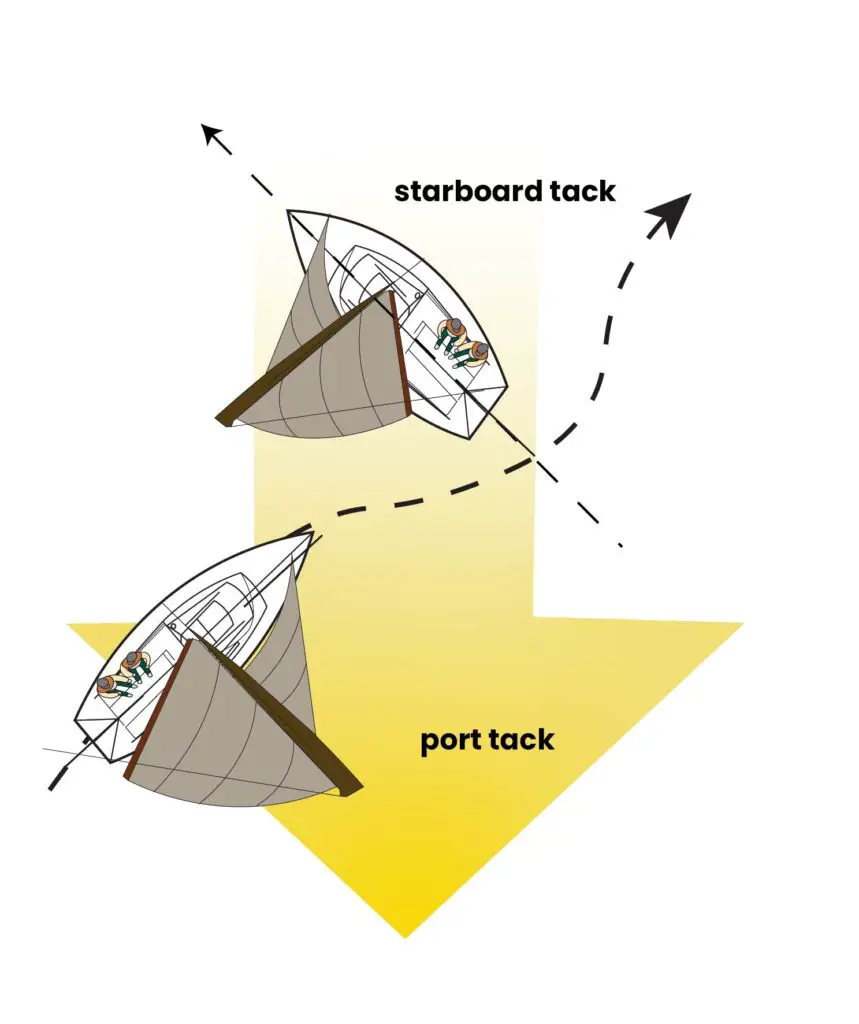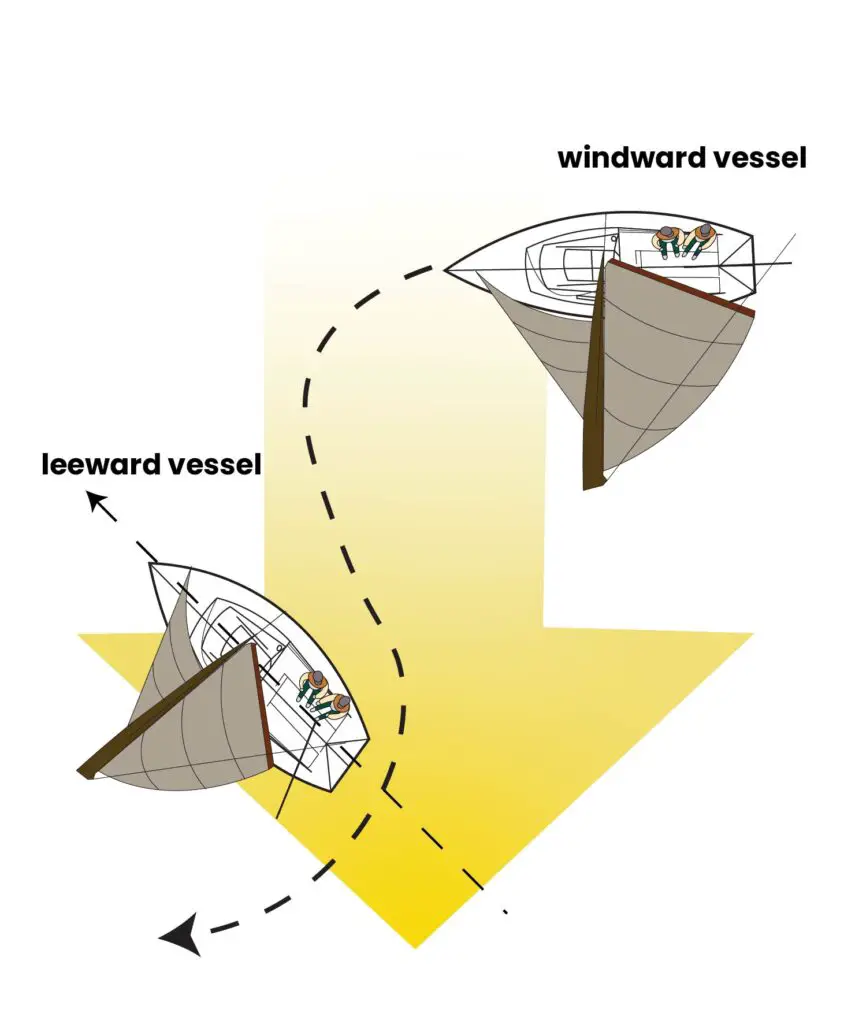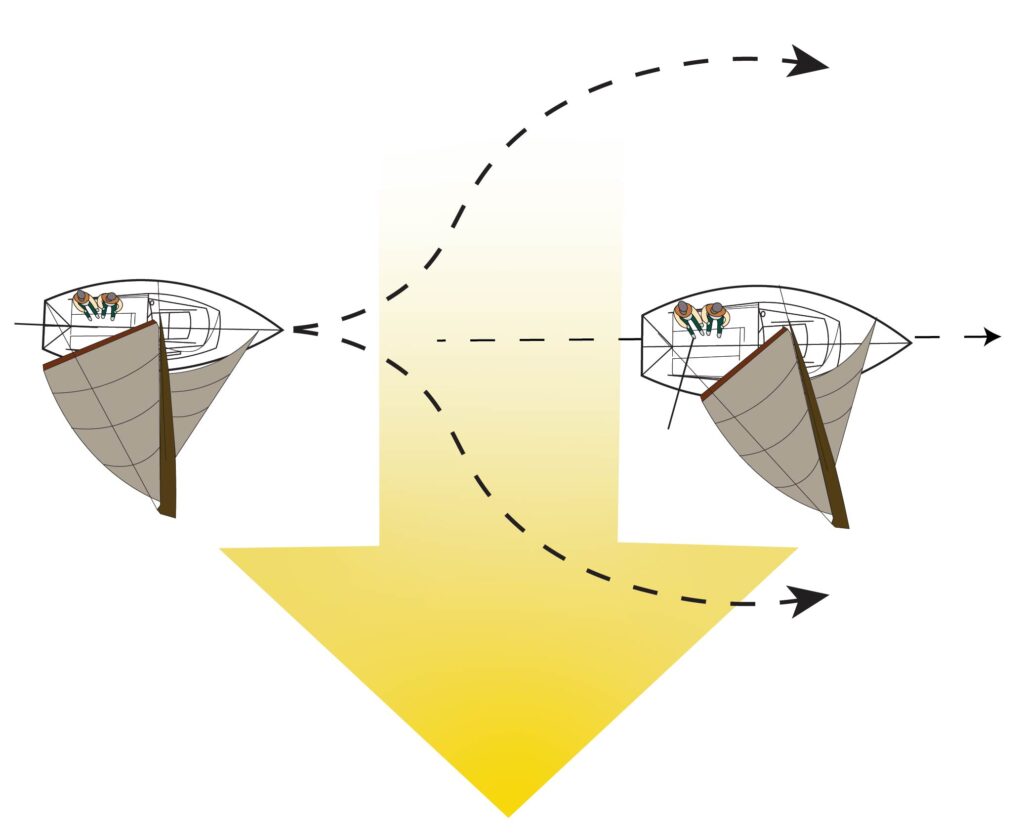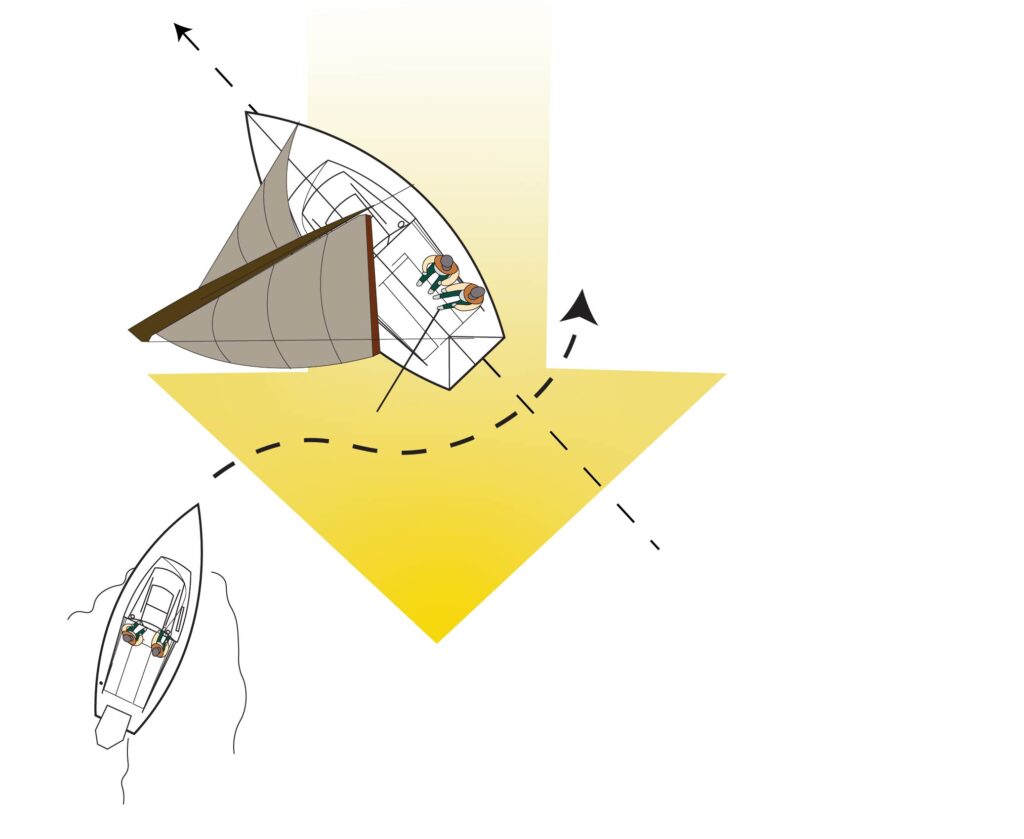When sailing a sailboat, one of the most important things you need to understand is some of the rules on the water. These rules are similar to driving a car on the road.
There are basic rules for who has the right of way in the water. A good skipper should clearly understand who the stand-on vessel is and who the give-way vessel is. A skipper must also understand when his boat is the stand-on boat, when his boat is the give-way vessel, and who has the right of way on the waterways. The main object of all the rules of the water is to avoid a collision.
Table of Contents
- Sailing Skills – Basic Rules For Overtaking And Right Of Way On the Water
- General Sense Rules Of Water Safety
- Frequently Asked Questions
- Related Questions
Sailing Skills – Basic Rules For Overtaking And Right Of Way On the Water
There are primary navigation and water rules that every sailor should know. The purpose of these rules is to avoid collisions on the water.
There is a stand-on and give-way vessel when two boats are near the same area. Here is what each of these sailing terms means:
- Stand-on vessel – The stand-on vessel is the sailboat with the right-of-way.
- Give-way vessel – The give-way vessel must give way when it may be on a collision course.
Even though the rules of the water have both stand-on and give-way vessels, every boat on the water should do all it can to avoid a collision. t is crucial for every boat on the water to understand some of the water’s primary navigation and safety rules.
Below are the basic five basic navigation rules for who is the stand-on vessel and the give-way vessel.
Starboard Tack Has The Right Of Way Over Port Tack

A sailboat on the starboard tack has the right of way over the sailboat on the port tack.
As boats on opposite sides approach each other, the boat on the port tack needs to give way to the boat on the starboard tack. The boat’s skipper on the port tack should change course and aim the boat well behind the stern of the starboard tack boat.
The boat on the starboard tack is the stand-on vessel; they should hold their course and continue in their sailing direction.
Leeward Vessel Has Right Over Windward Vessel

When two boats are approaching each other and on the same tack, the boat that is not upwind or the leeward boat has the right of way over the windward vessel.
The windward vessel should give way to the leeward vessel and steer the boat safely behind or out of the way of the leeward vessel. The leeward vessel is the stand-on vessel and should remain on course.
The Overtaken Vessel Has Right Over Overtaking Vessel

The boat that is passing another boat should not expect the slower boat to clear a path for them. The boat doing the passing is the give-way vessel, and its skipper must change the course to maneuver their boat around the slower or overtaken vessel.
The boat being overtaken is the stand-on vessel and should remain on the course and speed they were previously on so that the overtaking boat can safely pass them. If a sailing boat decides to pass a powerboat, it must also keep clear of the powerboat to pass them safely.
A Sailboat Has The Right Of Way Over A Powerboat

Because a powerboat or even a sailboat under power is more maneuverable, the sailboat that is not under power is the stand-on vessel, and the powerboat or sailboat under power is the give-way vessel.
It is vital with this that the stand-on boat’s sailboat holds its course unless the other boat comes so close that the skipper feels they need to change course to avoid a collision.
Sailing on Lake Michigan, where they can be many powerboats or fishing boats out on the lake, many of the skippers of these boats do not fully understand these rules, so it is always best to do what you need to do to avoid a collision.
A Sailboat Should Stay Clear Of Large Vessels

Many large vessels, such as larger ships and tug boats have difficulty maneuvering. A sailboat should always give them the right of way or be the give-way vessel when sailing near a larger vessel such as a tug boat or large ship.
A general rule is that the sailboat should give those boats a wide berth, so there is no chance of any collision, and always consider those larger boats the stand-on vessel they will give way to.
If a barge is towing something behind it, never attempt to cross the towing line and get between the tug boat and their tow. Also, if fishing vessels have traps behind them, the same safety and caution should be taken.
General Sense Rules Of Water Safety
The main rule of water safety is to ensure that you sail your boat without collisions on the water; There are also some general rules of water safety.
- A Stand-on vessel will always have the right if any of the following occur:
- A vessel is disabled.
- A vessel is difficult to maneuver, such as a tug boat or a larger vessel.
- A craft, such as a tanker in a channel, restricts a vessel.
- A vessel that is engaged in commercial fishing, you need to watch out for their traps.
- Always stay alert when skippering a sailboat.
- If you are unsure if the other boat knows or understands the right-of-way rules, then stay clear of them and sail in another direction.
- Make sure that your course and actions are apparent to the other vessels.
- Be polite and willing to share the water so everyone can be out on the water safely.
- A swimmer in the water would always have the right of way. If you see someone swimming, avoid them and go another direction or way.
The primary purpose of right-of-way rules is that you can avoid a collodion. A good skipper will do all they can to avoid a collision with any vessel or object that is out there in the water.
At A Bus On A Dusty Road, we talk about travel, life, sailing, and ex-pat living. We are all about “Living Life As A Global Citizen.” We explore social, cultural, and economic issues and travel.
We would love to have you be part of our community. Sign up for our newsletter to keep up-to-date by clicking here. If you have any questions, you can contact me, Anita, by clicking here.
Listen to our Podcast called Dusty Roads. You can find it on all major podcast platforms. Try out listening to one of our podcasts by clicking here.
Subscribe to our A Bus On A Dusty Road YouTube Channel with great videos and information by clicking here.
Frequently Asked Questions
What are the basic rules for right of way in the water?
The basic rules for right of way in the water include identifying the stand-on vessel (which maintains its course and speed) and the give-way vessel (which must yield and take appropriate action to avoid a collision).
How can a skipper determine who is the stand-on vessel and who is the give-way vessel?
A skipper can determine the stand-on and give-way vessel by understanding the specific rules of navigation, such as the International Regulations for Preventing Collisions at Sea (COLREGS). These rules outline various scenarios and vessel types to determine the right of way.
What is the role of a skipper in understanding right of way?
A skipper must have a clear understanding of when their boat is the stand-on vessel (which has the right of way) and when their boat is the give-way vessel (which must yield the right of way).
Why is it important for a skipper to know when their boat is the stand-on vessel?
Knowing when their boat is the stand-on vessel allows the skipper to maintain their course and speed with confidence, ensuring other vessels give way and avoiding potential collisions.
Why is it important for a skipper to know when their boat is the give-way vessel?
Understanding when their boat is the give-way vessel enables the skipper to take appropriate action to avoid a collision by yielding the right of way to the stand-on vessel.
What are the consequences of not following the right-of-way rules?
Not following the right-of-way rules can lead to collisions, endangering the safety of people on board and potentially causing damage to vessels and property.
Are the right-of-way rules the same for all types of vessels?
While many right-of-way rules apply to all vessels, there are specific rules and considerations for different types of vessels, such as sailboats, powerboats, commercial vessels, and vessels operating in narrow channels.
How can a skipper determine who has the right of way on waterways?
Determining who has the right of way on waterways involves applying the relevant rules and regulations based on the specific situation, vessel types, and the location of the vessel.
Related Questions
Are There Dead Bodies Inside The Great Wall Of China?
Bodies would not have been buried right into the wall, but they could have been buried in the earth near and even under the wall. They would not have put them right into the wall, as it would have caused structural damage when the bodies decomposed. The bodies are probably buried right by the wall, under some stone, and other slabs.
You can learn more by reading Are There Dead Bodies Inside The Great Wall Of China? by clicking here.
What Is Tacking In Sailing? Steps To A Proper Tack
Tacking is when you move the boat’s bow into the wind to turn the boat’s direction. It is a very common maneuver that all sailors must learn to master. But with any sailing maneuver, you must understand the proper steps to do a safe tack.
To learn more, you can read our blog on What Is Tacking In Sailing? Steps To A Proper Tack by clicking here.
What Is The Best Way To Remember The Points Of Sail When Sailing?
A jibe in sailing is when the boat moves with the stern through the wind. In a jibe, the stern will move through the wind. Like any sailing maneuver, when you have a crew, the helmsman or the captain steering the boat needs to adequately communicate with the crew about what is happening so that they know; this is especially true when jibing.
By clicking here, you can discover What Is The Best Way To Remember The Points Of Sail When Sailing?.

